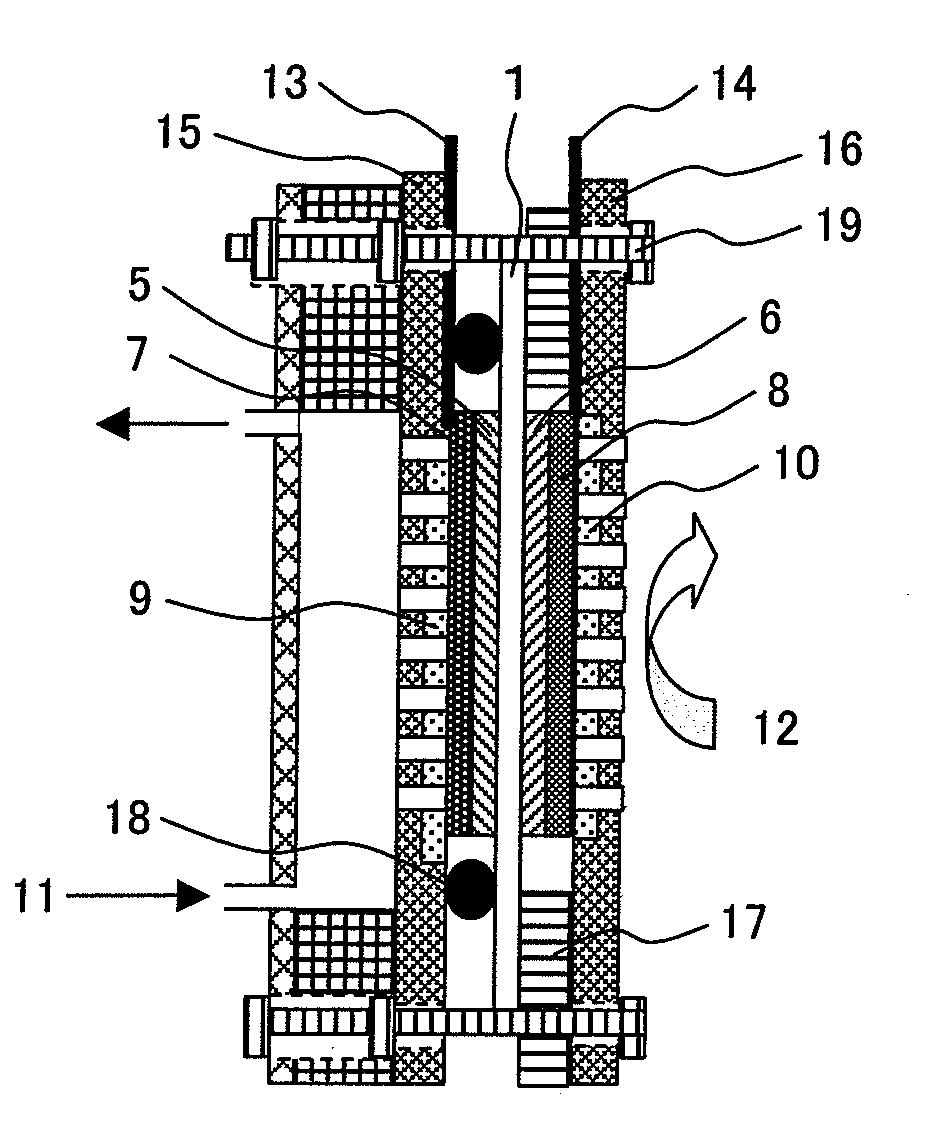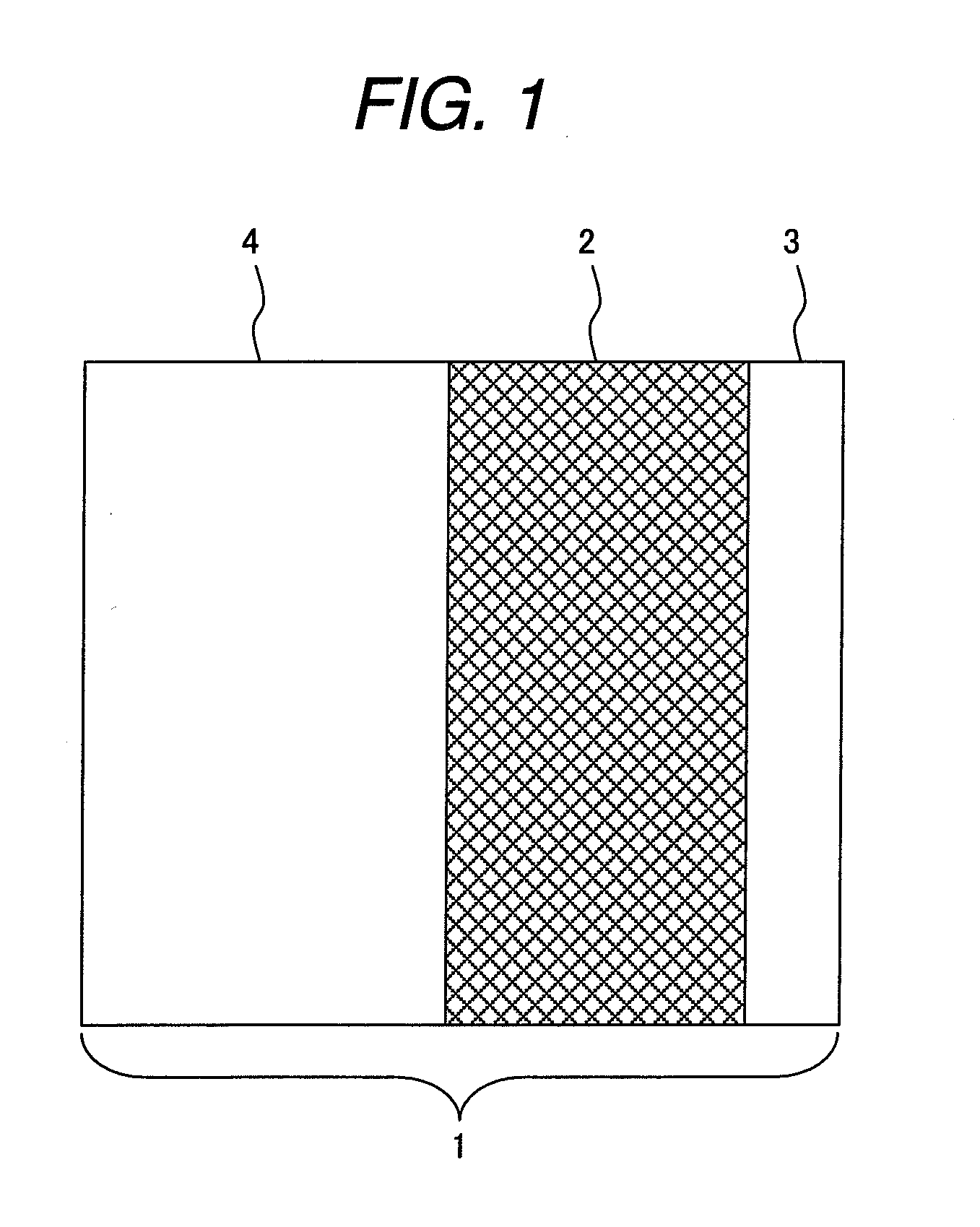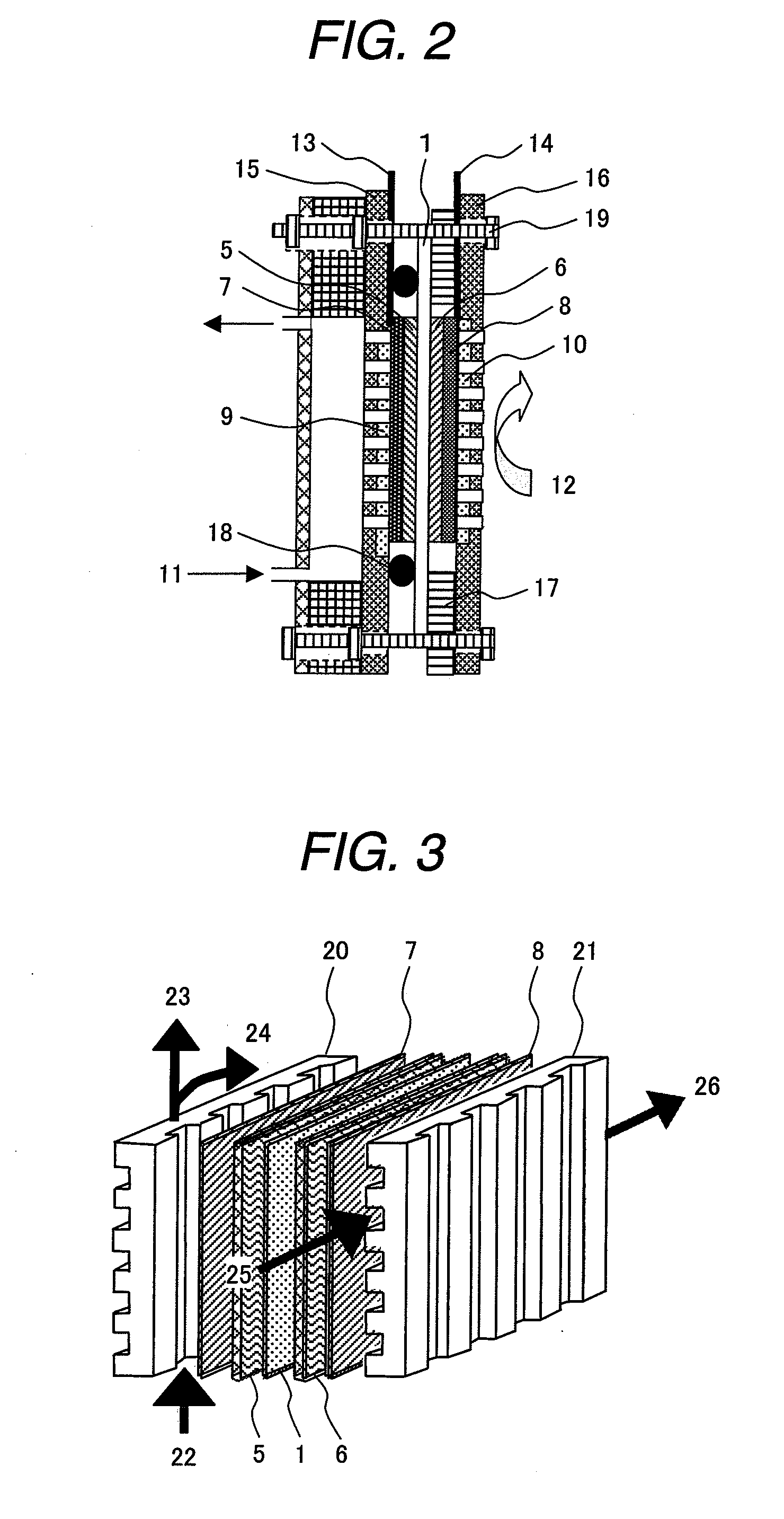Polymer electroyte membrane, membrane/electrode assembly and fuel cell using the assembly
a technology of electrolyte membrane and assembly, which is applied in the direction of cell components, electrochemical generators, cell component details, etc., can solve the problems of deterioration of electrolyte membrane, wall thickness loss, and molecular weight reduction
- Summary
- Abstract
- Description
- Claims
- Application Information
AI Technical Summary
Benefits of technology
Problems solved by technology
Method used
Image
Examples
example 1
(Manufacturing of Electrolyte Composite Membrane)
[0032]Sulfonated polyether sulfone (S-PES) with a number average molecular weight of 4×104 and an ion exchange equivalent weight of 8×102 g / equivalent was dissolved in N,N-dimethylacetamide to manufacture a 30 wt % electrolyte solution. The electrolyte solution was cast and coated on a glass substrate. A polyolefin porous membrane was placed thereon, and impregnated therewith. Further, an electrolyte solution was cast and coated from thereabove. At this step, by controlling the amount of the electrolyte to be cast, the thicknesses of the electrolyte layers on the opposite sides of the polymer layer were changed. Thereafter, heating and drying were carried out at 80° C. for 20 minutes, and then at 120° C. for 20 minutes, thereby to remove the solvent in the solution. As a result, there was manufactured a solid polymer electrolyte composite membrane having a porous layer on the inner sides of a pair of electrolyte layers in which the th...
example 2
(Manufacturing of Electrolyte Composite Membrane)
[0034]Sulfonated polyether sulfone with a number average molecular weight of 4×104, and an ion exchange equivalent weight of 11×102 g / equivalent was dissolved in N,N-dimethylacetamide to manufacture a 30 wt % electrolyte solution. The electrolyte solution was cast and coated on a glass substrate. A polyolefin porous membrane was placed thereon, and impregnated therewith. Further, the electrolyte solution formed in Example 1 was cast and coated from thereabove. Thereafter, heating and drying were carried out at 80° C. for 20 minutes, and then at 120° C. for 20 minutes, thereby to remove the solvent in the solution. As a result, there was manufactured a solid polymer electrolyte composite membrane having a porous layer on the inner sides of a pair of electrolyte layers in which the ion exchange equivalent weight of one electrolyte layer is larger than the ion exchange equivalent weight of the other electrolyte layer. The observation of ...
example 3
(Manufacturing of Electrolyte Composite Membrane)
[0036]Sulfonated polyether sulfone with a number average molecular weight of 7×104 and an ion exchange equivalent weight of 8×102 g / equivalent was dissolved in N,N-dimethylacetamide to manufacture a 30 wt % electrolyte solution. The electrolyte solution was cast and coated on a glass substrate. A polyolefin porous membrane was placed thereon, and impregnated therewith. Further, the electrolyte solution formed in Example 1 was cast and coated from thereabove. Thereafter, heating and drying were carried out at 80° C. for 20 minutes, and then at 120° C. for 20 minutes, thereby to remove the solvent in the solution. As a result, there was manufactured a solid polymer electrolyte composite membrane having a porous layer on the inner sides of a pair of electrolyte layers in which the average molecular weight of one electrolyte layer is larger than the average molecular weight of the other electrolyte layer. The observation of the cross sect...
PUM
 Login to View More
Login to View More Abstract
Description
Claims
Application Information
 Login to View More
Login to View More - R&D
- Intellectual Property
- Life Sciences
- Materials
- Tech Scout
- Unparalleled Data Quality
- Higher Quality Content
- 60% Fewer Hallucinations
Browse by: Latest US Patents, China's latest patents, Technical Efficacy Thesaurus, Application Domain, Technology Topic, Popular Technical Reports.
© 2025 PatSnap. All rights reserved.Legal|Privacy policy|Modern Slavery Act Transparency Statement|Sitemap|About US| Contact US: help@patsnap.com



